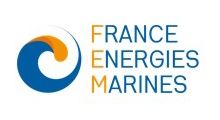
OROWSHI
Offshore wind turbine design including joint wind-wave information in standard for hurricane-exposed sites
Duration: 36 months (2022-2025)
Context
The offshore wind industry targets areas currently exposed to tropical cyclones, like in Asia Pacific or French tropical territories. Other regions of interest, like East Coast of the United States and Hawaii, are also currently exposed to tropical cyclones but may become more affected due to climate change effects. Because they are generally rare events, the definition of the extreme wind value is generally based on Monte-Carlo type approaches which provide reliable statistics. Meanwhile, the standard recommendation regarding extreme wave relies on the classical long term extrapolation method, based on a sample of wave observations or model output, commonly used for mid-latitude conditions. This leads to inconsistencies in the definition of the 25-year meteocean conditions to be considered for the ultimate state design of offshore wind turbines.
Objective
To better characterise extreme wind and waves during tropical cyclones to optimise the design of offshore wind turbines exposed to hurricane risks
Scientific and technical contents
- Creation of a database of existing information on winds and waves associated with tropical cyclones
- Validation and improvement of parametric surface wind models, hen extrapolation to hub height
- Validation, improvement and extension towards coastal waters of the parametric wave model from Kudryavtsev et al.
- Development of a method for estimating wind and wave joint extremes
- Application of the new method to 2 sites of interest and comparison to standard practices
Resources
Partners and financing
This project is led by France Energies Marines.














The total project budget is €1,226K.
This project receives funding from France Energies Marines and its members and partners, as well as French State funding managed by the National Research Agency under the France 2030 investment plan. It also benefits from the financial support of Pôle Mer Bretagne Atlantique.

Photo credit: WikiImages / Pixabay